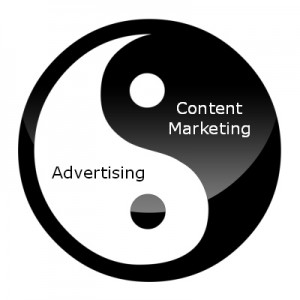Native Advertising is not a new idea. Advertisers, publishers and marketers have created numerous offerings that blend branded advertising with editorial content. In the past, there have been media properties like advertorials and e-zines. They had their day in the sun and then faded into the sunset.
Is Native Advertising, like its predecessors? Or isn’t it?
Native advertising is a concept encompassing both an aspiration as well as a suite of ad products according to the Interactive Advertising Bureau (IAB). This aspiration is advertisers and publishers aspire to deliver paid ads that are so cohesive with the page content, assimilated into the design, and consistent with the platform behavior that the viewer simply feels that they belong.
The suite of ad products is:
- IN-FEED UNITS: Is in a publisher’s normal content well; is in story form to match the surrounding stories and allows for an individual to play, read, view or watch without leaving to a separate page.
- SEARCH ADS: Present their content in a format and layout that is readily available to organic search engine results and links to a page like the organic results.
- RECOMMENDATION WIDGET: Is a form of native advertising where an ad or paid content link is delivered via a “widget.” A common recommendation widget unit is integrated into the main well of the page, does not mimic the appearance of the editorial content feed, links to a page off the site.
- PROMOTED LISTING: Is found on sites that typically do not have a traditional editorial content well, they are designed to fit seamlessly into the browsing experience, are presented to look identical to the products or services offered on a given site.
- IN AD: Is placed outside of the editorial well, contains contextually relevant content within the ad, links to an offsite page, has been sold with a guaranteed placement so the agency knows exactly what content will surround it,
- CUSTOM/CAN’T BE CONTAINED: There is no limit to the possibilities when an advertiser and publisher work together on custom units. This group includes examples that don’t neatly fit into one of the above groups, or, as in the case of custom playlists, are too platform-specific to warrant their own category but need to be on a marketer’s radar as native advertising options.
The IAB is conducting a special E-course on Native Advertising in August. There will be three different courses; one on August 5, 12 and 19. I’m teaching this E-course.
But is Native Advertising going to stick around? 12 experts tell us if Native Advertising is or isn’t here to stay.
- What native advertising has done is take the old advertorial model and given it a big shake up… what we do now is create content that doesn’t necessarily talk about the brands, as this is not what connects with readers. – Inez Albert, APAC
- We believe native ads are quickly becoming the de facto ad format on mobile and increasingly moving into desktop. – Doug Anmuth, J.P. Morgan
- Native advertising is one of the most promising ways of engaging consumers with brands. A recent native advertising test by Hearst within Harper’s Bazaar produced a click-through rate of up to 1.5% compared to the industry average of 0.1% on traditional online banner ads. – Alex Attinger, Digitalbox
- Native ads can be effective if there is a solid strategy behind them and the ads are measured appropriately. With many large websites making a majority of their revenue from native ads, it looks as if they are here to stay. – Alison Blumer, Ine.
- Native Advertising is really advertising that is disguised within the context of editorial content, and studies have shown that consumers believe that such advertising is misleading. – Ari Brandt, MediaBrix
- With native advertising old things are new again, even if the “new” is evolving and developing at an incredible speed. – Kim Davis, Ripley PR
- Brands spend massive amounts of money on paid media. Instead of trying to convince an audience what the brand wants them to do, the advertiser should instead invest that same money in creating content the audience finds useful. – Sam Ford, Peppercom
- For native advertising to work and engage relevant users, advertisers must deliver valuable content that indeed deserves to match the form and function of a site. – Stefanie Mosca, MNI
- It has been found that the less an advertisement looks like an advertisement and the more it looks like an editorial, the more readers stop, look and read. – David Ogilvy
- Native advertising is a disruptive technique that is positioned to change the advertising business model. For content marketers, native advertising has unique implicatons. It opens up a method of content distribution many marketers have ignored, making it a potential key to getting more eyes on your content. – Mark Sherwin, Content Marketing Institute
- The basic rules make sense but where does native fit with muck-raking, awkward, scurrilous, investigative journalism? Native surely won’t want to be associated with highly controversial stories. – Raymond Snoddy OBE
- Brands will need to increase their budgets and plan better campaigns. Publishers will need to better integrate native ads so the ads do not interrupt the reader experience and are honest, ethical and transparent. Consumers will need to warm up to the new form of advertising which is meant to be helpful and engaging. – Danny Wong, Blank Label
Do you believe Native Advertising is or isn’t here to stay? Will you be attending the E-course on Native Advertising from the IAB?




